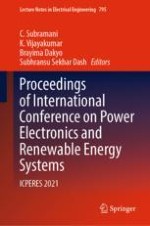This book features selected papers from the International Conference on Power Electronics and Renewable Energy Systems (ICPERES 2021), organized by SRM Institute of Science and Technology, Chennai, India, during April 2021. It covers recent advances in the field of soft computing applications in power systems, power system modeling and control, power system stability, power quality issues and solutions, smart grid, green and renewable energy technology optimization techniques in electrical systems, power electronics controllers for power systems, power converters and modeling, high voltage engineering, networking grid and cloud computing, computer architecture and embedded systems, fuzzy logic control, fuzzy decision support systems, and control systems. The book presents innovative work by leading academics, researchers, and experts from industry.
